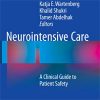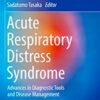What is the Ideal Approach for Emergent Pericardiocentesis Using POCUS Guidance?
wjem.com.cnA total of 166 pericardial effusions were identified during the study period. The mean skin-to-pericardial fluid distance was 5.6 cm for the subxiphoid views, which was significantly greater than that for the parasternal and apical views.
The subxiphoid view had the highest predicted complication rate at 79.7%, which was significantly greater than the apical and parasternal views.
Our results suggest that complication rates with pericardiocentesis will be lower via the parasternal or apical approach compared to the subxiphoid approach.
The distance from skin to fluid collection is the least in both of these views.
A total of 166 pericardial effusions were identified during the study period.
The mean skin-to-pericardial fluid distance was 5.6 cm for the subxiphoid views, which was significantly greater than that for the parasternal and apical views.
The subxiphoid view had the highest predicted complication rate at 79.7%, which was significantly greater than the apical and parasternal views.

















